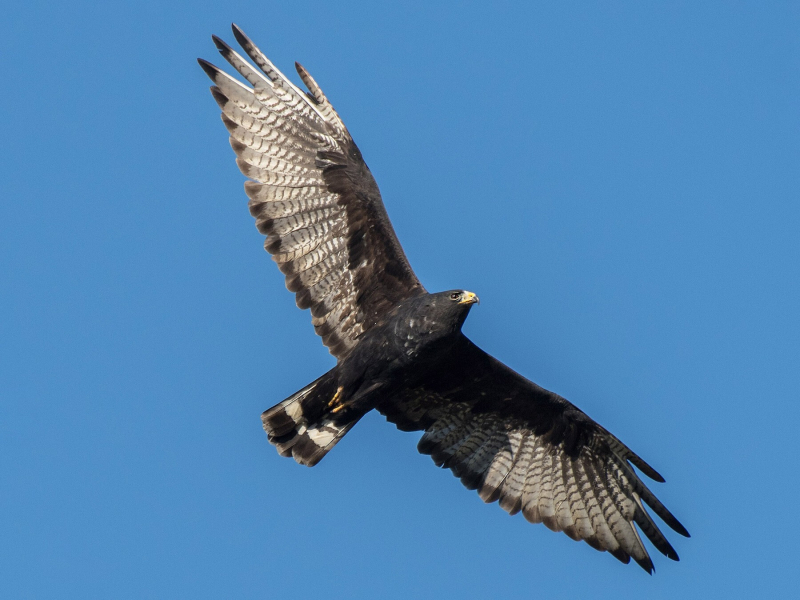Zone-Tailed Hawk
When it comes to an animal that starts with the letter "Z," the Zone-tailed Hawk (Buteo albonotatus) cannot go off the list. This hawk, native to the Americas, particularly the southwestern United States down to South America, is distinguished by its striking plumage and a hunting strategy that mimics that of vultures, adding an element of surprise to its presence in diverse ecosystems.
The Zone-tailed Hawk exhibits a remarkable resemblance to vultures, especially from a distance, owing to its predominantly black plumage and a wedge-shaped tail. This uncanny mimicry serves as an effective means of surprising its prey. When soaring high in the sky alongside actual vultures, the hawk adopts the appearance of a scavenger, allowing it to approach its quarry, including small mammals and birds, without arousing suspicion.
Measuring around 18 to 22 inches (46 to 56 centimeters) in length, the Zone-tailed Hawk possesses a wingspan of about 46 to 54 inches (117 to 137 centimeters). Its wings are broad and rounded, providing excellent maneuverability during flight, while its hooked beak and sharp talons are formidable tools for capturing and dispatching prey.
Despite its close resemblance to vultures, the Zone-tailed Hawk is a bird of prey belonging to the Buteo genus. Its mimicry is a textbook example of Batesian mimicry, a form of mimicry in which a harmless species evolves to resemble a harmful or dangerous one.
Unlike many other hawks, the Zone-tailed Hawk displays a notable preference for soaring and gliding during its hunting expeditions. This behavior, combined with its vulture-like appearance, allows it to get closer to its prey without triggering the alarm responses often provoked by the presence of typical raptors.
While these hawks do not display sexual dimorphism in their plumage, the juveniles sport a distinct look with a mottled brown-and-white pattern. As they mature, they gradually acquire the adult's darker plumage.
The Zone-tailed Hawk typically resides in a variety of habitats, ranging from arid deserts to dense forests. It is often found near rivers and canyons, where its hunting strategy can be most effective. During the breeding season, which typically occurs from April to August, they construct nests in high locations such as cliffs or trees.
















